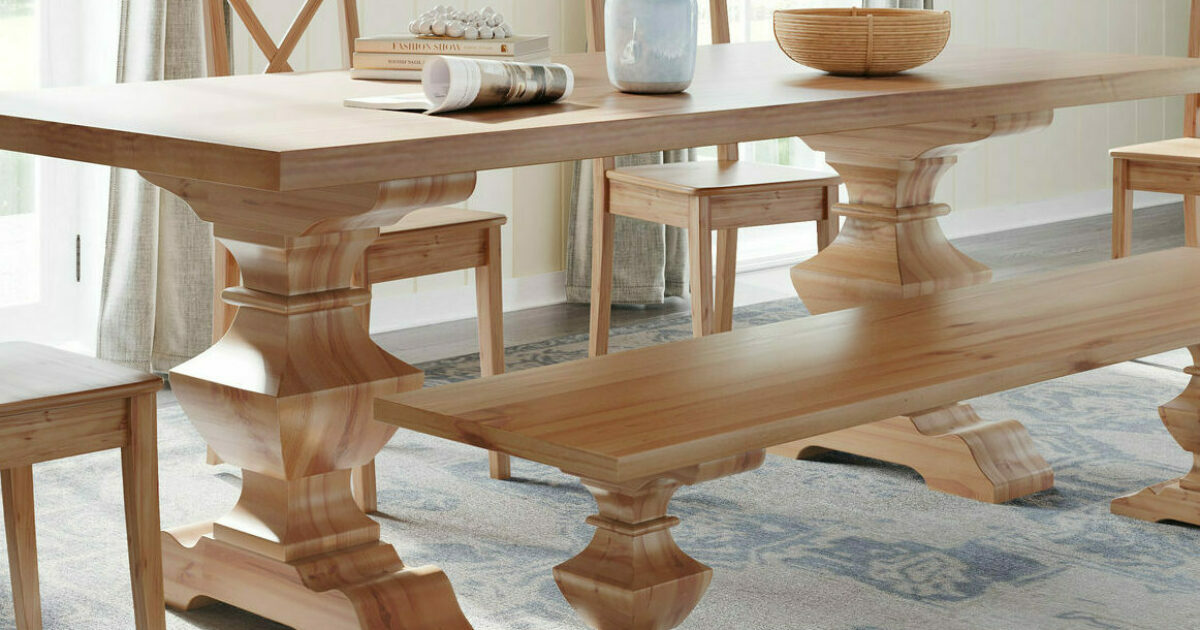Redefine Your Table's Charm with Stunning Dining Table Legs Wood Designs
Wiki Article
Exploring the Different Types of Dining Table Legs Wood for Your Eating Area
The choice of eating table legs wood can exceptionally impact both the visual and useful top qualities of your eating space. Strong wood choices, such as oak and walnut, give a timeless look with unequaled durability, while crafted timber alternatives provide innovative designs that imitate the richness of natural grains.Solid Wood Options

Unlike crafted products, strong timber is much less susceptible to warping and damage over time when appropriately kept. Each piece of solid timber is special, showcasing specific features that include to the beauty and personality of the eating table.
Furthermore, solid wood can be completed in various ways, ranging from natural oils to stained coatings, permitting home owners to individualize their furniture to match their decor. In recap, selecting solid wood for eating table legs not just ensures architectural honesty yet likewise enhances the aesthetic allure of the eating area, making it a worthwhile financial investment for any kind of home.
Engineered Wood Alternatives

Plywood, constructed from numerous layers of timber veneer, is steady and especially strong, making it an excellent selection for eating table legs. Its layered composition permits it to stand up to modifications in humidity and temperature level better than typical solid wood. MDF, on the various other hand, supplies a smooth surface for paint or veneering, allowing designers to attain a refined look while keeping structural stability.
Particleboard, commonly utilized in economical choices, gives suitable stamina and is lightweight, making it easier to manage. Nonetheless, it may not be as long lasting as plywood or MDF. It is vital to consider the designated usage and desired visual when picking engineered wood choices. These materials not only improve the performance of eating rooms but likewise enable greater style flexibility, making certain that modern and standard styles can exist together harmoniously.
Reclaimed Timber Includes
Recovered timber uses an one-of-a-kind blend of sustainability and character, making it a progressively prominent option for eating table legs. Sourced from old barns, manufacturing facilities, and other structures, recovered wood symbolizes a history that new materials simply can not replicate. Each piece carries its very own tale, marked by distinctive imperfections, knots, and varying grain patterns, which contribute to a table's one-of-a-kind visual charm.In enhancement to its visual charm, reclaimed wood is an eco-friendly alternative. By repurposing formerly made use of products, it decreases the demand for new lumber, hence assisting to save woodlands and lessen waste. This straightens with a growing customer preference for lasting practices in home furnishings.
Furthermore, redeemed wood is typically more sturdy than recently harvested timber because of its age. The natural drying out process that reclaimed timber undergoes lead to a denser and more powerful material, making it much less susceptible to bending and splitting. This improves the longevity of dining tables, allowing them to hold up against the rigors of day-to-day use.
Softwood vs. Hardwood
When picking eating table legs, understanding click to find out more the differences between softwood and hardwood is vital for attaining both functional and aesthetic objectives. They commonly show an even more rustic look, making them suitable for country-style or informal eating rooms.On the various other hand, woods, sourced from deciduous trees like maple, oak, and cherry, are renowned for their thickness, strength, and toughness. The complex grain patterns and abundant tones of hardwoods give a timeless and sophisticated appeal, making them perfect for formal eating setups. While woods tend to be much more expensive and heavier, their strength versus damage commonly justifies the investment.
Inevitably, the selection between softwood and hardwood for eating table legs need to straighten with your style vision, usage needs, and spending plan, making sure that your eating area reflects your personal style while remaining useful over time.

Treatments and surfaces
The aesthetic charm and longevity of table legs can be dramatically improved via numerous coatings and therapies. These processes not only safeguard the wood from damage however also elevate its look, allowing it to complement varied indoor designs.One usual therapy is discoloring, which permeates the wood and enhances its all-natural grain while including color. Spots offer a rich, sophisticated look, allowing property owners to match their furnishings with existing decor. Conversely, clear coatings such as polyurethane or varnish produce a protective layer without altering the timber's original color, making sure toughness versus wear and tear.
Additionally, all-natural oils, like tung or reference linseed oil, nourish Read Full Report the wood and provide a subtle luster, all while being green. These oils allow the surface area to breathe, preventing dampness buildup and possible warping.
For those looking for a rustic charm, weather-beaten or distressed surfaces can be related to develop an aged look, adding character to the item. Inevitably, the choice of treatments and coatings relies on personal preference, wanted aesthetic appeals, and the certain timber kind, making it important to consider these factors when selecting dining table legs for your area.
Verdict
Strong woods, engineered options, and reclaimed options each deal distinctive benefits, providing to numerous preferences and needs. Inevitably, the selection of wood kind should align with desired design, resilience, and environmental factors to consider, enhancing the overall eating experience.The option of dining table legs wood can greatly impact both the aesthetic and functional qualities of your eating area - Dining Table Legs Wood. Strong timber choices, such as oak and walnut, give a traditional look with unrivaled toughness, while engineered timber choices provide innovative layouts that imitate the richness of all-natural grains. Strong wood supplies a timeless high quality that can elevate the general style of an eating area. Each item of solid timber is one-of-a-kind, showcasing specific features that add to the appeal and personality of the dining table
In addition, reclaimed timber is frequently a lot more sturdy than freshly gathered wood due to its age.
Report this wiki page